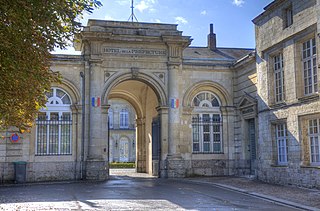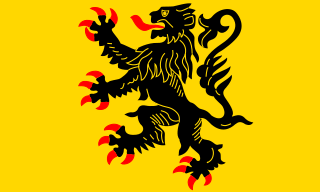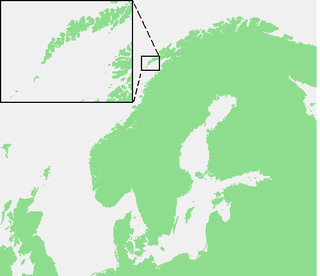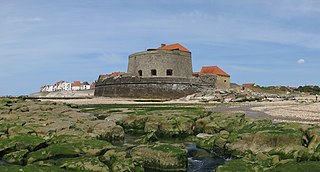Related Research Articles

Pas-de-Calais is a department in northern France named after the French designation of the Strait of Dover, which it borders. It has the most communes of all the departments of France, 890, and is the 8th most populous. It had a population of 1,465,278 in 2019. The Calais Passage connects to the Port of Calais on the English Channel. Pas-de-Calais borders the departments of Nord and Somme and is connected to the English county of Kent via the Channel Tunnel.

Nord-Pas-de-Calais ; Picard: Nord-Pas-Calés); is a former administrative region of France. Since 1 January 2016, it has been part of the new region Hauts-de-France. It consisted of the departments of Nord and Pas-de-Calais. Nord-Pas-de-Calais borders the English Channel (west), the North Sea (northwest), Belgium and Picardy (south). The majority of the region was once part of the historical (Southern) Netherlands, but gradually became part of France between 1477 and 1678, particularly during the reign of king Louis XIV. The historical French provinces that preceded Nord-Pas-de-Calais are Artois, French Flanders, French Hainaut and (partially) Picardy. These provincial designations are still frequently used by the inhabitants.

Operation Fortitude was the code name for a World War II military deception employed by the Allied nations as part of an overall deception strategy during the build-up to the 1944 Normandy landings. Fortitude was divided into two sub-plans, North and South, with the aim of misleading the German High Command as to the location of the invasion.

The Corps of Royal Marines (RM), also known as the Royal Marines Commandos, are the UK's special operations capable commando force, amphibious light infantry and also one of the five fighting arms of the Royal Navy. The Corps of Royal Marines can trace their origins back to the formation of the "Duke of York and Albany's maritime regiment of Foot" on 28 October 1664, and can trace their commando origins to the formation of the 3rd Special Service Brigade, now known as 3 Commando Brigade on 14 February 1942, during the Second World War.
During World War II, Operation Abercrombie was an Anglo-Canadian reconnaissance raid on the area around the French coastal village of Hardelot, located south of Boulogne-sur-Mer, in the Pas-de-Calais. It had been scheduled for the night of 19/20 April 1942, but delayed until 21/22 April. The raid was largely unopposed but, on review, the benefits were thought not to have been worth the effort. Due to a navigation error the Canadian detachment lost their way and had to abort.

Operation Anklet was the codename given to a British Commando raid during the Second World War. The raid on the Lofoten Islands was carried out in December 1941, by 300 men from No. 12 Commando and the Norwegian Independent Company 1. The landing party was supported by 22 ships from three navies.

The Commandos Marine are the Special Operation Forces (SOF) of the French Navy. The Commandos Marine are nicknamed Bérets Verts. They operate under the Naval Riflemen and Special Operations Forces Command (FORFUSCO) and form part of the French Special Operations Command.

Cap Gris-Nez is a cape on the Côte d'Opale in the Pas-de-Calais département in northern France.

The arrondissement of Boulogne-sur-Mer is an arrondissement of France in the Pas-de-Calais department in the Hauts-de-France region. It has 74 communes. Its population is 159,748 (2016), and its area is 633.7 km2 (244.7 sq mi).

Ambleteuse is a commune in the Pas-de-Calais department in northern France.

Operation Collar was the codeword for the first commando raid conducted by the British forces during the Second World War. The location selected for the raid was the Pas-de-Calais department on the French coast. The British Commandos had not long been formed and were not yet trained, so the operation was given to No. 11 Independent Company under the command of Major Ronnie Tod.
The canton of Desvres is a canton situated in the department of the Pas-de-Calais and in the Hauts-de-France region of northern France. The canton is organised around Desvres in the arrondissement of Boulogne-sur-Mer.
The canton of Marquise is a former canton situated in the department of the Pas-de-Calais and in the Nord-Pas-de-Calais region of northern France. It was disbanded following the French canton reorganisation which came into effect in March 2015. It consisted of 21 communes, which joined the canton of Desvres in 2015. It had a total of 21,997 inhabitants (2012).
No. 218 Squadron RAF was a squadron of the Royal Air Force. It was also known as No 218 Squadron after the Governor of the Gold Coast and people of the Gold Coast officially adopted the squadron.

No. 12 Commando was a battalion-sized commando unit of the British Army during the Second World War. Formed in 1940 in Northern Ireland, they carried out a number of small-scale raids in Norway and France between 1941 and 1943 before being disbanded and its personnel dispersed to other commando units.
Operation Forfar was the name given to a series of British Commando raids on the French coast during World War II. The raids were part of Operation Starkey, a military deception intended to draw out the Luftwaffe. The purpose of these raids was to identify German coastal units and to gain technical intelligence on German equipment, creating the impression of pre-invasion reconnaissance.
Operation Acid Drop was a British Commando raid during the Second World War. This was the first commando raid carried out by No. 5 Commando and consisted of two simultaneous operations over the night of 30/31 August 1941. Each raid consisted of one officer and 14 men, their targets were the beaches at Hardelot and Merlimont in the Pas-de-Calais, France with the aim of carrying out reconnaissance and if possible, to capture a German soldier. It was a hit and run type raid with only 30 minutes ashore but in the event neither party encountered any Germans.

Fort Mahon is a sea fort by the commune of Ambleteuse in the Pas-de-Calais, northern France. The fort was built at the end of the 17th century by the military architect Vauban on the orders of Louis XIV to defend the port in the estuary of the Slack. It was designated a Monument historique in the 1960s.
References
- ↑ "Naval codewords: Pas-de-Calais". Naval History. Retrieved 9 June 2010.
- ↑ The Times:In memoriam - War, Saturday 27 July 2013